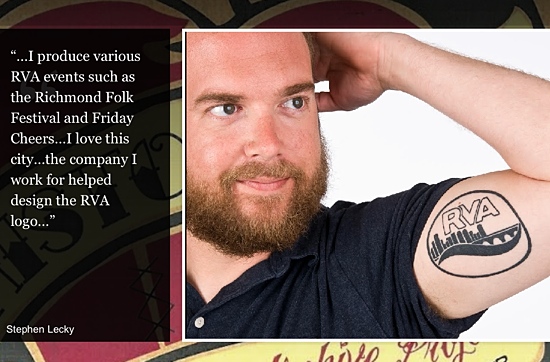Richmond History Center exhibits featured in Google Cultural Institute
The Valentine Richmond History Center has gone global with the help of Google.

Three exhibits at the Valentine Richmond History Center are now globally available via the Google Cultural Institute, a digital curation of exhibits and collections from museums and archives across the world.
“They’re providing a framework where we can upload high-resolution photos, information or details about the objects or photography, and then curate exhibits within that framework for people to experience,” said Domenick Casuccio, Director of Public Relations and Marketing at the Valentine Richmond History Center, speaking about the London-based Google Cultural Institute (GCI).
Last summer, the GCI sent an invitation1 to the Richmond History Center asking if the local museum would be interested in participating in the institute.2 “Everyone agreed…that this would be a great opportunity for us to really promote some of our exhibits on this global platform,” Casuccio said.
“We already had high-resolution photography and all of the label copy and everything was already created, so we really just needed to put it into the cultural institute framework,” Casuccio said. “It was just putting that information into the right spot.” He said adding the materials into the framework, and waiting for GCI approval of them, took about three months.
The museum’s three exhibits debuted on the GCI website earlier this month:
- The “What in the World is Happening in this Photo?!?” Caption Contest Exhibition
- History, Ink: The Tattoo Archive Project
- A History of Richmond in 50 Objects
The institute was particularly intrigued by the History, Ink exhibit, which showcases Richmond tattoos done by local tattoo artists. “They were really excited about having the tattoo exhibit promoted on Google Cultural Institute,” Casuccio said. “One thing about the Valentine is that we have a very eclectic and unique collection of items and photography.” Those collections are now also unique to the GCI.
The Richmond History Center is currently working on additional exhibits to submit to the GCI: ones on the Manchester and Oregon Hill neighborhoods, local theaters, and the City fire department. As was the case with the three exhibits currently in the GCI, the museum has existing high-resolution photos and copy ready to upload into the GCI framework. Casuccio couldn’t reasonably estimate as to when those exhibits will be available on the GCI.
“Our board of directors and our volunteers and our staff are very excited about the Valentine being featured in the Google Cultural Institute,” Casuccio said, as it broadens the “scope of who is seeing our exhibits on a global scale.”
That scope will increase further once the Valentine completes its current $4.1 million renovations, expected in October. After renovations are complete, the GCI will create dynamic 360-degree photos of the next exhibit. “If you’re in China, or wherever, you can be in the This is Richmond, Virginia exhibit3 that’s going to be opening this fall–which is our new core exhibit–and look at that exhibit and see what it’s like as a 360 [degree] version,” Casuccio said. The GCI will use technology similar to that used by Google for its Street View project.
Until then, the Valentine Richmond History Center will keep uploading digital exhibits to the GCI. “We’re just going to keep on curating as much content as we have,” Casuccio said.
-
Recommend this
on Facebook -

Report an error
-

Subscribe to our
Weekly Digest





There are no reader comments. Add yours.